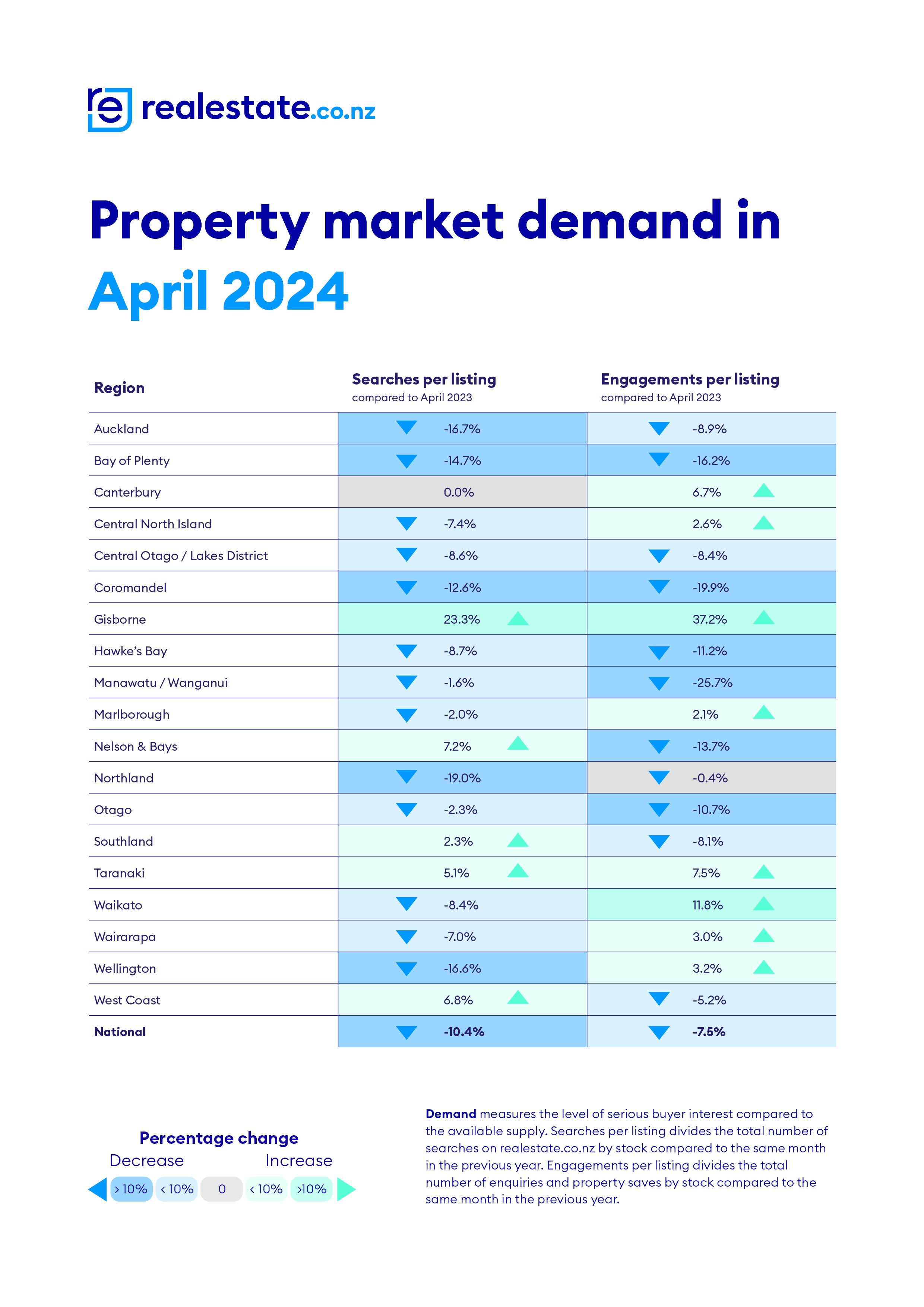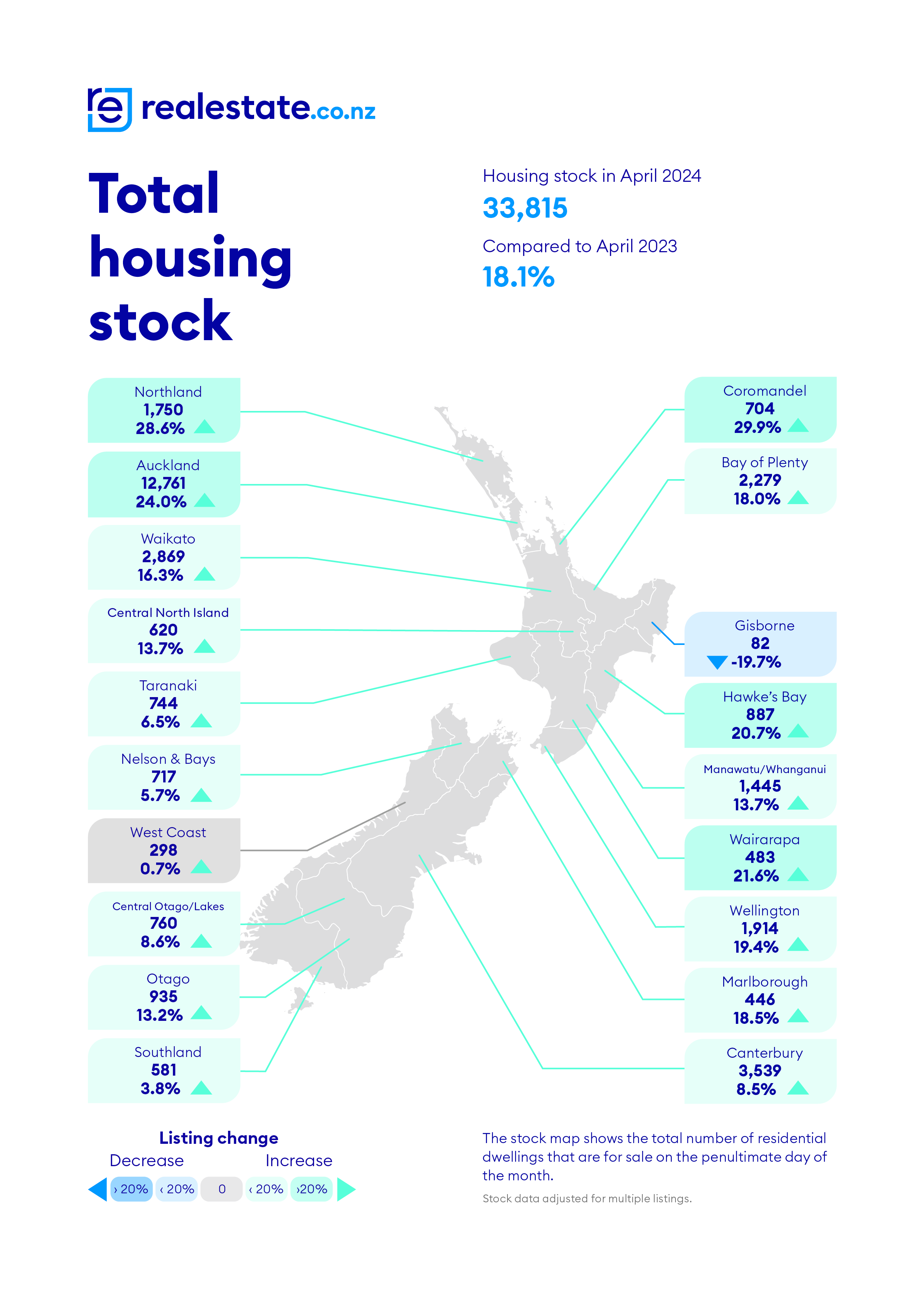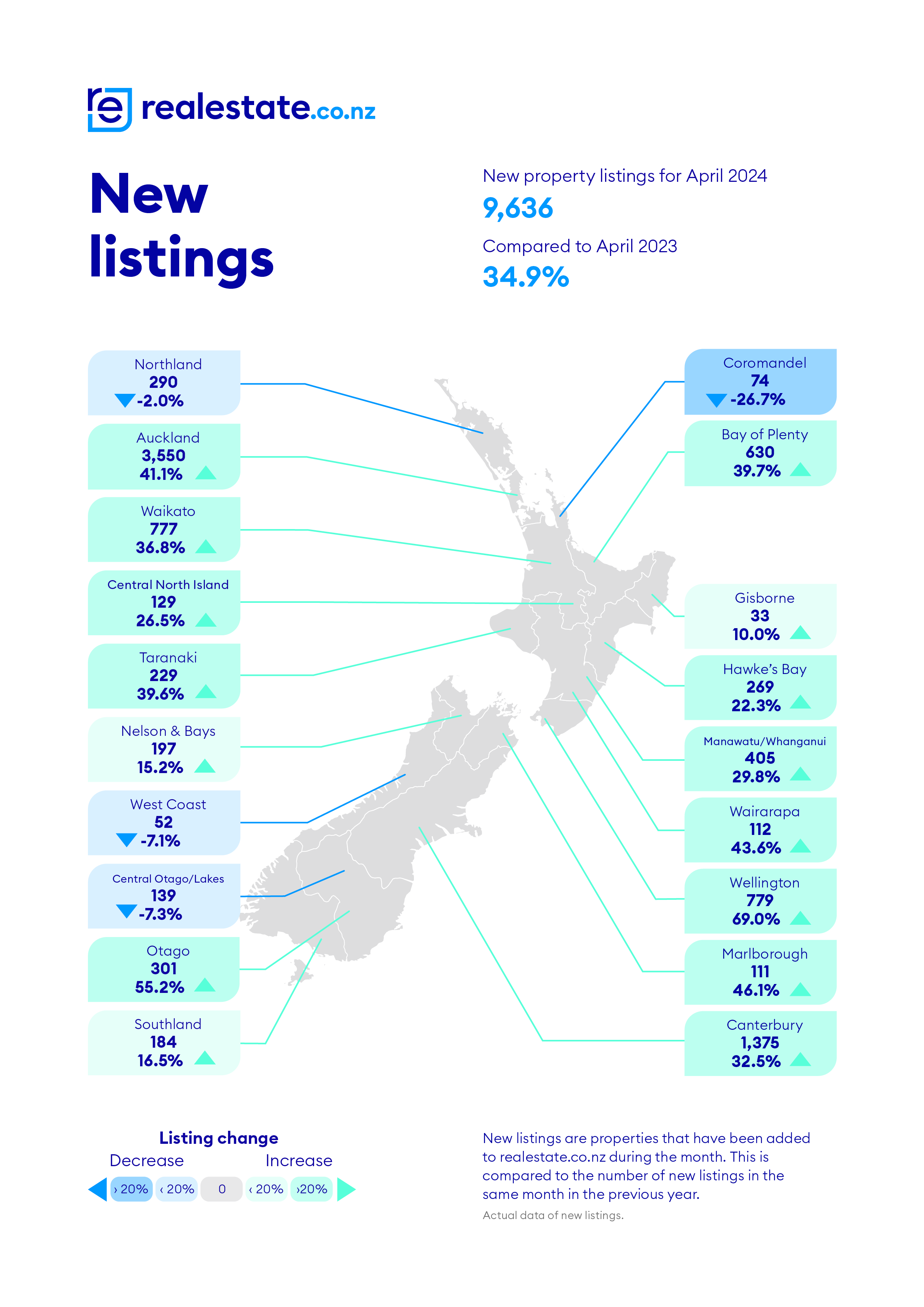Stock levels elevated, prices stable

Property demand significantly decreased across New Zealand in April, driven by heightened economic uncertainty and soaring living costs, according to realestate.co.nz.
“This indicates a cooling of buyer interest amid economic uncertainty,” said Sarah Wood (pictured above), CEO of realestate.co.nz.
National figures reflected a 10.4% drop in searches per listing and a 7.5% fall in engagements per listing year-on-year, with similar declines noted across 13 of the 19 regions analysed.

Inventory surge reflects market correction
Contributing to the declining demand, property stock levels were significantly elevated last month, mirroring figures from 2015. The total number of homes available for sale increased by 18.1% compared to April 2023, reaching 33,815.

Additionally, new listings rose nationally by 34.9% year-on-year. However, this increase follows an unusually low period in April 2023 caused by adverse weather conditions, suggesting that the current levels represent a return to normal rather than signalling a market boom.

Stable prices amidst economic headwinds
Despite the downturn in demand, the national average asking price remained relatively unchanged over the past year, hovering around $868,877, only slightly down from April last year.
“The national average asking price has remained below $900,000 since December 2022,” Wood said, underscoring the market’s deviation from its peak in January 2022 when it exceeded $1 million.

Regional exceptions challenge national trends
Contrary to the national trend, Central Otago/Lakes District and the West Coast experienced significant increases in average asking prices, with year-on-year rises of 17.0% and 21.6% respectively.
“While Central Otago/Lakes District boasts the highest average asking prices in the country, the West Coast remains one of the most cost-effective regions,” Wood said.
These regions also saw a decrease in new listings, indicating a robust market in select areas.
Southland emerged as the most cost-effective region, with the lowest average asking prices nationwide.

Economic impact on mortgages and market liquidity
With nearly 59% of New Zealand’s existing mortgages due for renewal within the next year, significant shifts in interest rates are expected to impact market liquidity.
“Those who fixed two years ago might soon move from interest rates of around 3% to around 7%,” Wood said. “This is likely pulling liquidity from the market and dampening demand.”
Market prospects amidst challenges
As New Zealand’s property market navigates through economic turbulence, Wood stressed the importance of informed decision-making.
“In these challenging times, buyers and sellers must stay informed and proactive. Leveraging expert advice can unlock potential opportunities,” she said.
Despite the challenging economic environment, regions like Central Otago/Lakes District and West Coast demonstrate resilience and potential for growth, providing a silver lining for stakeholders in the property market.
Compare the latest figures to previous realestate.co.nz data.
Get the hottest and freshest mortgage news delivered right into your inbox. Subscribe now to our FREE daily newsletter.



